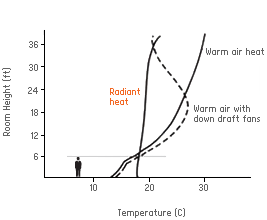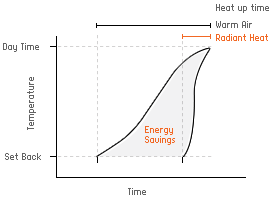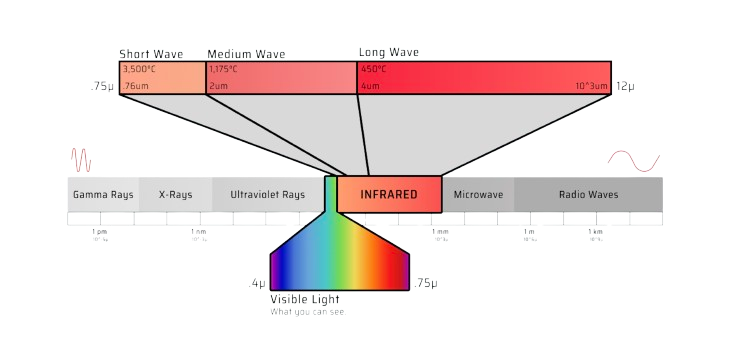Warmth with infrared – as old as the earth Itself
Life on earth began and is sustained because the rays of the sun travel through space to give light and warmth to our planet. The infrared rays that reach us pass through the atmosphere and warm the surface of the earth which becomes a heat reservoir and releases warmth back to the atmosphere by convection, raising the ambient temperature of our environment. Infrared heaters function with the same principles of physics. An emitter is heated to a temperature at which it radiates infrared rays. The floor, objects, machinery and people in the room absorb the infrared waves and become secondary radiators raising the general air temperature.
Physics
Heat energy can be transmitted from one body to another by convection through air or conduction through a solid but only heat transfer by infrared wave transmission suffers no losses to the medium (the air) through which it passes.
The heat that is lost across the walls and ceiling of a building is directly proportional to the temperature differential between inside and outside; the greater the differential the greater is the rate of heat loss.

Warm air rises. The result is that in a large building, while there is comfort at the people level, near the ceiling, temperatures are undesirably hot. This increased temperature differential at the ceiling increases heat losses at the building roof and therefore fuel consumption.

Large buildings with large door openings present unique challenges for traditional warm air heating methods. When doors are opened, most of the warm air reservoir is lost to the outside. To reestablish people comfort, the interior air volume has to be reheated and driven down from high ceilings with high velocity air streams.



